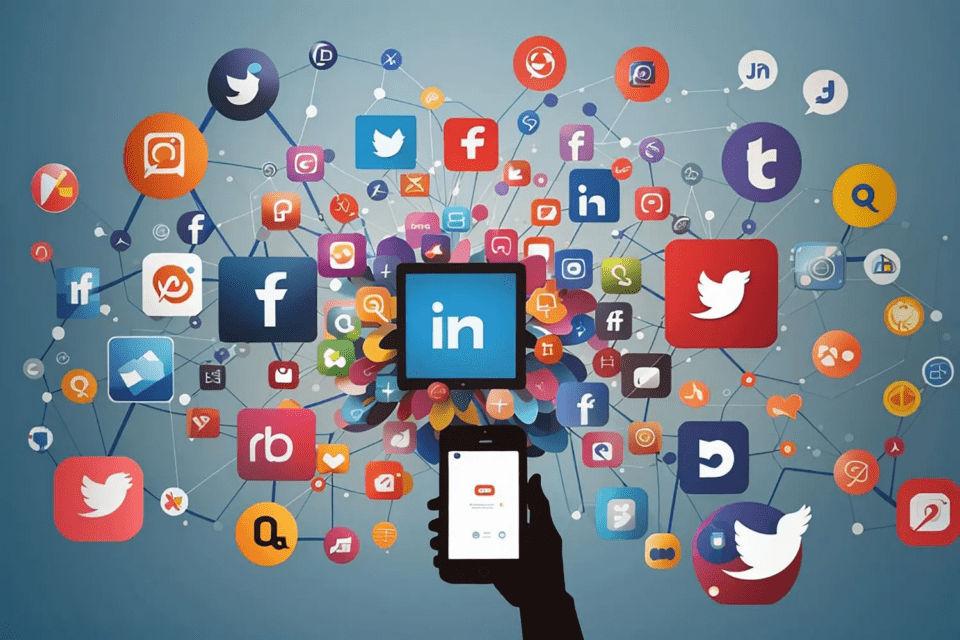How much time do you spend on Social Media every day? Did you know that, in addition to the benefits of entertainment, connection and information provision, social media also has countless benefits that help promote the economy, even create a brilliant career for you? So let’s find out with MarkKnow – What social media is, how to apply social media in marketing and business right after this.
What is Social Media?
What is social media ? Social media or social media/social networks are online platforms and applications that allow users to create, share and interact with user-generated content, and connect with each other in a virtual space. This is a modern form of communication where users can build online communities to share information, ideas, personal messages and other content such as images or videos .
Technically, social media is built on the Web 2.0 platform. This is the generation of the internet that allows users to receive information, interact, and contribute content. These platforms often have basic features such as creating personal profiles, making friends, messaging, posting, commenting, and sharing multimedia content.
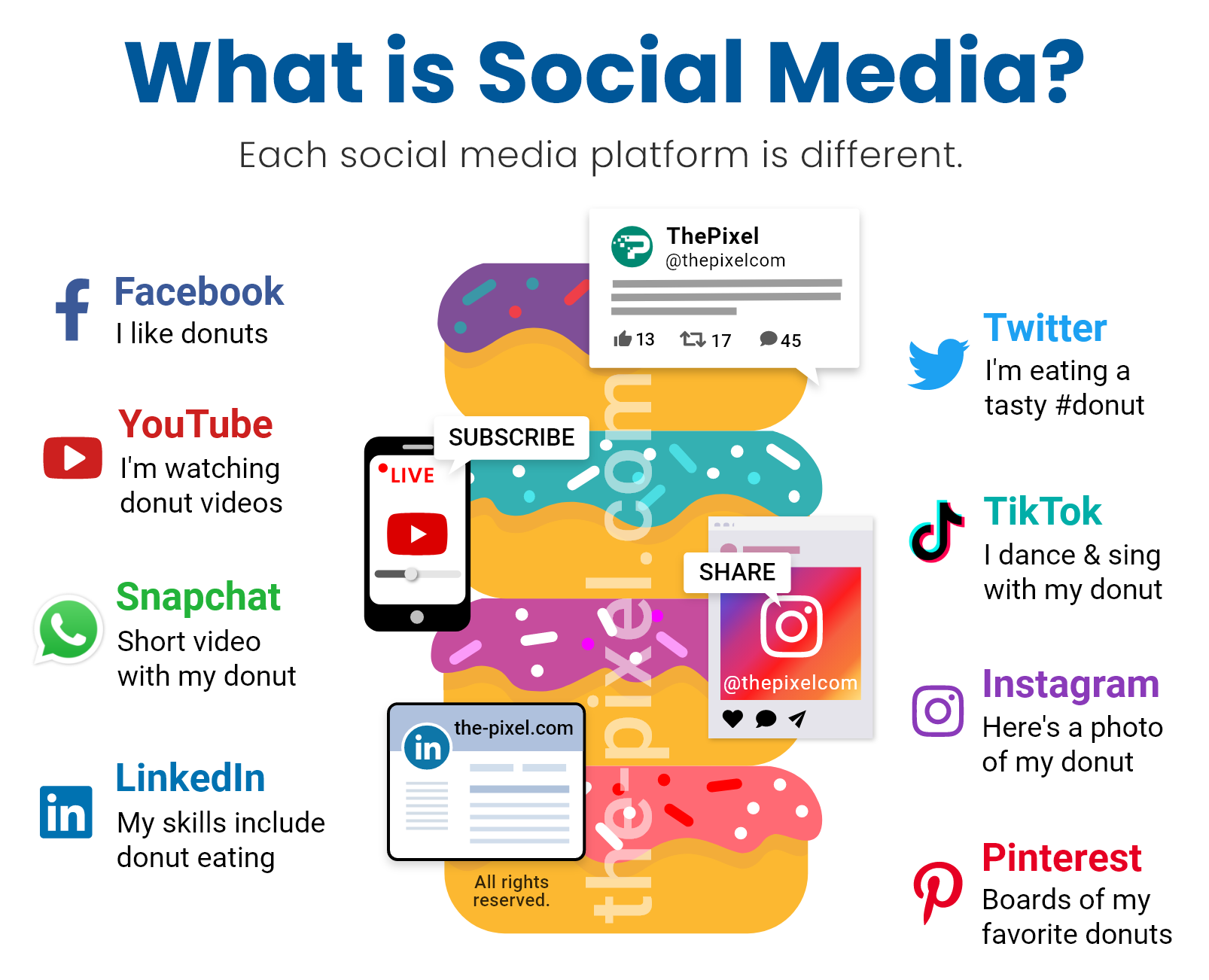
Functions of Social Media
Social media has become an indispensable part of modern life, strongly influencing the way people communicate, work and entertain. It is not only a connection tool but also a means of marketing, business and even political and social advocacy in the digital age.
Communication and Connection
The most important function of social media is to facilitate communication and connection between people. In virtual space, geographical distance is no longer a barrier, people can easily contact each other no matter where they are in the world. Users can chat in real time through messages, video calls or update about their lives.
In particular, social networks also help maintain and strengthen relationships, while creating opportunities to connect with new people who share similar interests and views. The function of communication and social connection is especially meaningful in the context of globalization, when the need for cross-border communication is increasing.
Sharing of Information and Content
Social media has revolutionized the way people share and consume information. Users are no longer simply consumers of information but have become content producers. They can freely share their thoughts and experiences in various forms such as text, images, videos or podcasts.
These applications create a rich and multi-dimensional information environment where everyone has the opportunity to be heard and express their views. The fast sharing feature of social networks also plays an important role in spreading information quickly and effectively, from current news to professional knowledge in various fields.
Community Building and Social Promotion
Social media is where online communities are formed and developed. These communities bring together groups of people with similar interests, goals or concerns, creating a space for them to exchange, learn and support each other. Social media is also a tool to promote positive social change. It facilitates the organization of social movements, fundraising for charity or raising public awareness of important issues. Social media also contributes to creating real impacts on life, from small changes in local communities to movements with global influence.
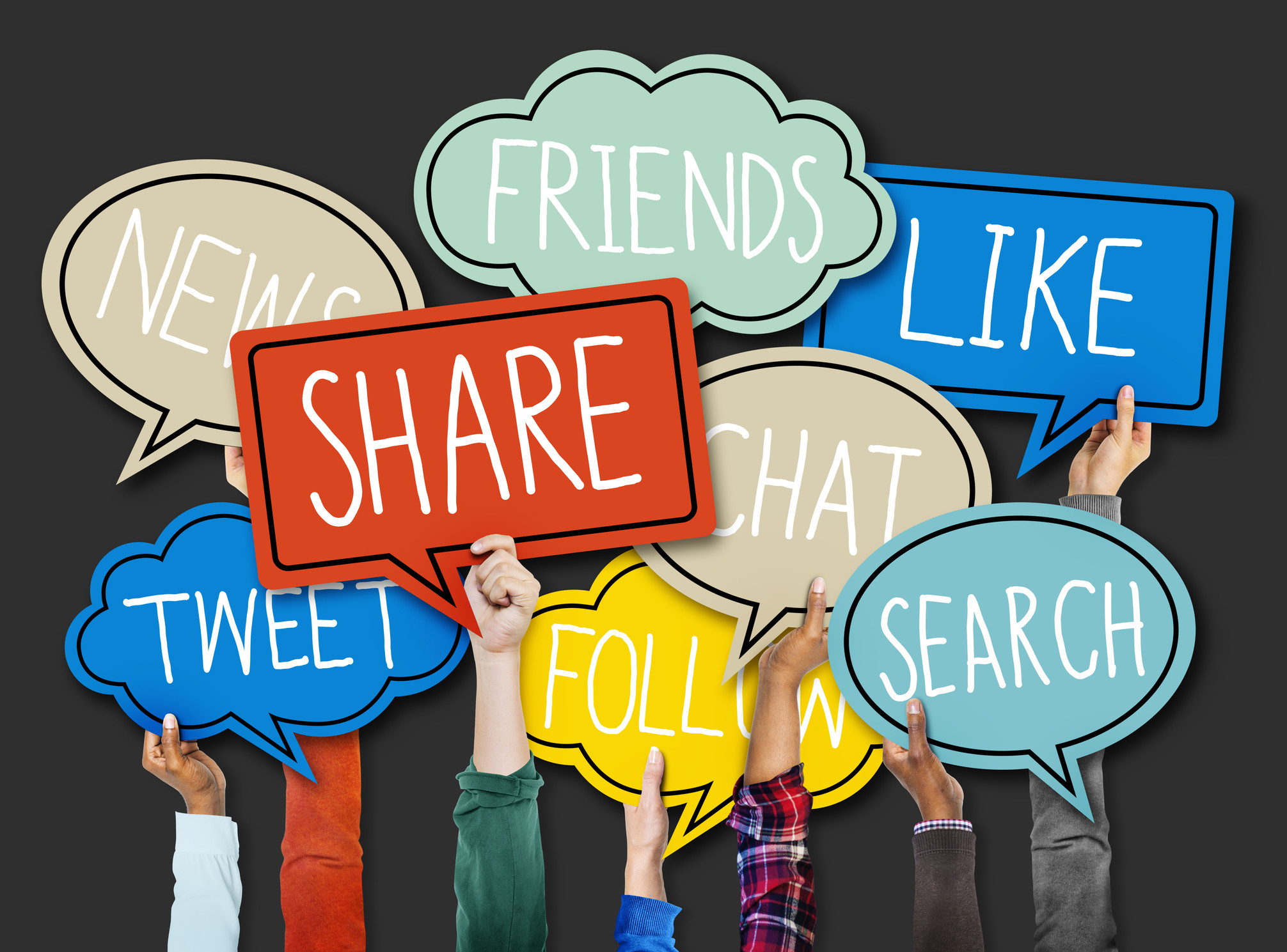
Learning
Social media has opened a new era in education, making the process of acquiring knowledge more flexible and diverse than ever before. Here, users can access a huge treasure trove of knowledge from all over the world. Online courses, video tutorials, and learning materials are widely shared, facilitating lifelong learning and personal skill development.
Online study groups on social media have become vibrant knowledge communities where learners can exchange knowledge, ask questions and receive support from people with similar interests or experts in the field. This not only helps to consolidate knowledge but also creates an interactive learning environment, stimulating critical thinking and problem-solving skills.
Entertainment
Social media has become one of the main sources of entertainment for people in the digital age. With a variety of forms of entertainment content such as short videos, movies, music, online games, social networks meet the diverse entertainment needs of all users. In particular, the high interactivity of these platforms allows users to not only enjoy but also participate in creating their own entertainment content.
Social media platforms also provide personalized entertainment experiences through intelligent algorithms. Based on users’ interests and behaviors, these platforms suggest appropriate content, optimizing each individual’s entertainment experience.
Business Marketing
Social media advertising tools allow businesses to customize marketing campaigns with high precision, targeting based on many criteria such as age, geographic location, interests, and user behavior. Social media marketing capabilities not only optimize advertising budgets but also ensure that marketing messages reach the right potential audience. Interactive features such as comments, sharing, and direct messages create a two-way communication channel between businesses and customers, helping to build sustainable relationships and increase customer loyalty.
Social media is also a platform for influencer marketing campaigns. Businesses can collaborate with influencers to promote products in a more natural and trustworthy way. Integrated e-commerce features on social networks such as online stores and direct purchase buttons also make the customer shopping experience quick and convenient.
Data Analysis and Trends
Social media analytics tools provide detailed information about your audience, including demographics, engagement behavior, activity time, and interests. This data helps businesses better understand their customers, thereby optimizing their marketing and product development strategies. Tracking trends on social media also helps businesses stay on top of changes in consumer tastes and needs.
These tools allow businesses to gauge public response to their brand, product or service. Customer response is especially important in crisis management and maintaining brand reputation. Analyzing hashtags, keywords, and trending topics also helps businesses identify new opportunities in the market and adjust their strategies to current trends.
Popular Social Media Categories
Dr. Marc Oliver Opresnik, together with Philip Kotler and Svend Hollensen, divided social media into four main types:
- Social Community
- Social Publishing
- Social Commerce
- Social Entertainment
Social Community
Social Community is a group of individuals who share common interests, concerns, or characteristics of hometown, personality, etc. The characteristic of social community is the ability to create and maintain social relationships in a digital environment. Here, you can build the image you want, connect with friends and relatives, share status, images and interact through features such as liking, commenting, sharing. The strength of these platforms is the ability to create communities with similar interests, occupations or purposes, thereby promoting interaction and engagement among members.
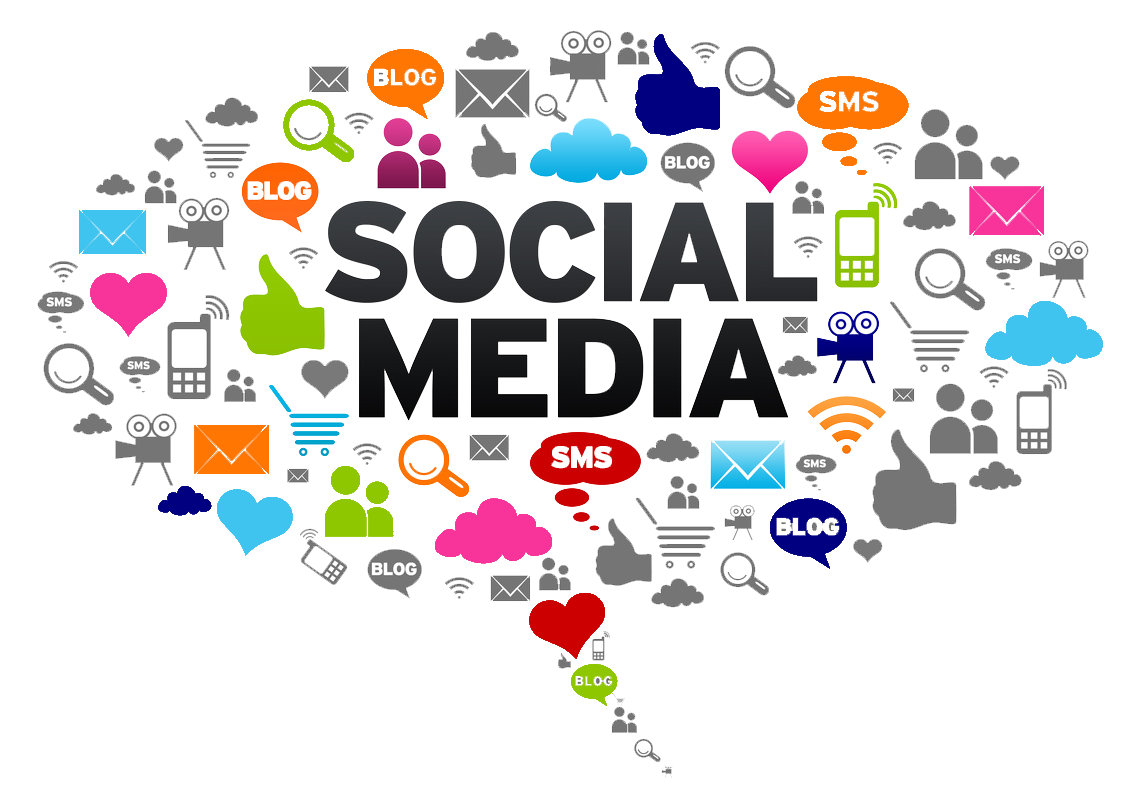
For businesses, social communities are a useful tool for building brands, engaging with customers and creating user loyalty. Facebook is the most typical example of this group with more than 3 billion monthly active users. This platform allows users to build detailed personal brands, connect with friends and family, join groups with similar interests and interact through a variety of features such as status, stories or livestream. In addition, LinkedIn is a professional social network with more than 875 million members. This platform focuses on building professional networks. LinkedIn allows users to share work experiences, search for job opportunities and connect with industry experts.
Social Publishing
Social publishing is a group of platforms that provide tools for users to express their creativity and expertise through various forms of content. These platforms often have features optimized for SEO, reader analysis and interaction, helping content creators to monitor and improve the effectiveness of their posts. This is also an effective channel for experts and influencers to build personal brands and share professional knowledge.
Here are some popular social media publishing platforms:
- Medium: A professional blogging platform that allows authors to share high-quality articles on a variety of topics, from technology to literature.
- WordPress: A rare platform with about 43% of the global website market share, providing tools for users to create blogs and personal websites with high customization.
- YouTube: The app & website has over 2 billion monthly users. This is the world’s largest video-sharing platform, where content creators can build channels on any topic such as education, spirituality, entertainment…
A prime example of success on these platforms is Casey Neistat, a vlogger who built a YouTube channel with over 12 million subscribers. Businesses like HubSpot have leveraged WordPress to build successful B2B marketing blogs that attract millions of readers each month through content marketing.
Social Commerce
Social commerce has revolutionized the way consumers discover and shop for products. These platforms allow businesses to create online stores, post products with shoppable tags, and integrate direct checkout features. The strength of social commerce is its ability to combine the shopping experience with social interaction, allowing users to easily discover products by following influencers, reading reviews from the community, and sharing their shopping experiences. This trend is growing strongly and is predicted to continue to grow in the future.
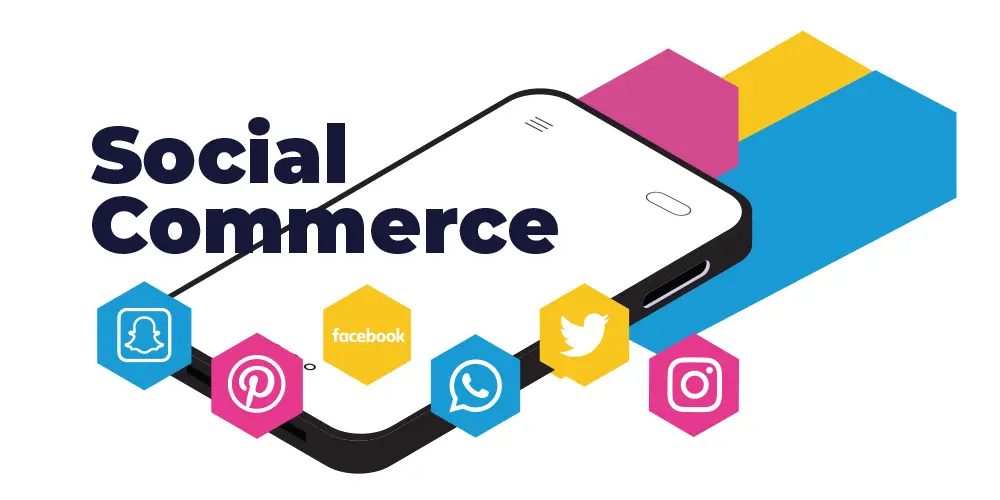
Some social commerce applications include:
- Instagram Shopping: With over 1 billion active users, Instagram Shopping has become an online shopping hub where users can shop directly from posts and stories. Fashion brands like Zara and H&M have taken advantage of this feature to create engaging product showcases that allow customers to purchase items with just a few clicks.
- Facebook Marketplace: This Facebook app has over 1 billion monthly users. Facebook Marketplace has become a C2C (consumer-to-consumer) marketplace where users can buy and sell everything from used goods to real estate.
Social Entertainment
Social entertainment has changed the way people consume entertainment content. The most prominent feature of this group is the ability to create highly interactive entertainment experiences, allowing users to watch and directly participate in creating content, commenting in real-time, and interacting with content creators. Social entertainment has created a new wave in the way entertainment content is consumed, especially attracting young users. For businesses, this is a great opportunity to reach customers through creative and attractive advertising forms. The most popular social entertainment platforms include:
- TikTok, with more than 1 billion monthly active users, has revolutionized the production and consumption of short videos. The platform has spawned a number of viral sensations and new stars like Charli D’Amelio, who has more than 150 million followers in just a few years.
- Twitch, the world’s largest game streaming platform, has more than 31 million daily viewers, where streamers like Ninja can earn millions of dollars a year from live broadcasts.
- Roblox, a social gaming platform, is not just a place to play games but also a creative ecosystem where users can create their own games and earn money from them. Major brands like Gucci have leveraged Roblox to create virtual fashion experiences.
- Spotify, with its social playlists and ability to share music with friends, has created a highly interactive music entertainment network.
The Impact of Social Media on Society
Social media has many aspects that both individuals and businesses can exploit for business, branding or simply entertainment. However, if used incorrectly, social media can also become a double-edged sword and a place for fraud, fake news, harassment, etc. to thrive.
Positive Impact
Social media has many influences on social life such as:
Social Communication and Connection
Social media has revolutionized the way people communicate and maintain relationships. In the digital age, distance is no longer a barrier to connection and interaction. Families with members living far apart can maintain regular contact through video calls on Messenger or WhatsApp, share important moments in their lives through Instagram Stories or Facebook Live. A typical example is during the COVID-19 pandemic, social media has become an important bridge to help people stay connected while social distancing. Online community groups have formed, creating spaces for users to share experiences, provide emotional support and even organize charitable activities.
Education
Social media has opened up new learning opportunities and broken down traditional barriers to accessing knowledge. Platforms like YouTube have become a giant “online university” with millions of instructional videos on everything from math and science to art and life skills. Online courses on Coursera or edX are widely shared via social media, allowing learners from all over the world to access curricula from top universities.
LinkedIn Learning has created a professional learning ecosystem where users can enhance their professional skills and earn widely recognized certifications. In the school environment, study groups on Facebook or Discord have become effective knowledge exchange spaces where students can discuss assignments, share documents and support each other. In particular, the trend of “micro-learning” through short videos on TikTok or Instagram Reels is increasingly popular, making learning more interesting and accessible to the younger generation.
Economic Development
Social media has revolutionized economic development, opening up countless business opportunities and creating entirely new employment models. The creative economy has flourished, with millions of people making a living from creating content on platforms like YouTube, Instagram and TikTok. A successful YouTuber can earn hundreds of thousands of dollars per month from advertising, sponsorships and product sales. Small and medium-sized businesses have taken advantage of social media as an effective and low-cost marketing and sales channel.
Expanding Career Opportunities
Social media has revolutionized the world of employment and career development. LinkedIn, for example, has become the world’s largest professional networking and recruiting platform. It is where job seekers can connect directly with employers, build their personal brand, and track relevant career opportunities. Many professionals have built their reputations and large client networks by sharing their expertise on social media platforms. Social media has also created entirely new professions such as social media manager, content creator, community manager, and digital marketing specialist. These positions require not only content creation skills but also a deep understanding of data analysis, user psychology, and market trends.
Cultural Impact and Social Movements
Social media has become a tool to shape popular culture and promote social movements globally. Through platforms such as Twitter, Facebook, Instagram, social movements can spread quickly and create a big impact. The #MeToo movement is a prime example, starting from a hashtag on Twitter and quickly becoming a global wave, changing perceptions of sexual harassment, promoting important reforms in many organizations and industries.
In the cultural sphere, social media has contributed to blurring the boundaries between cultures, creating global trends. K-pop is a prime example, with groups like BTS and BLACKPINK leveraging the power of social media to build global fan communities, spreading Korean culture to the world.
Negative Impact
Along with the positive impacts, social media also brings many challenges and worrying issues to modern society. These negative impacts need to be thoroughly addressed.
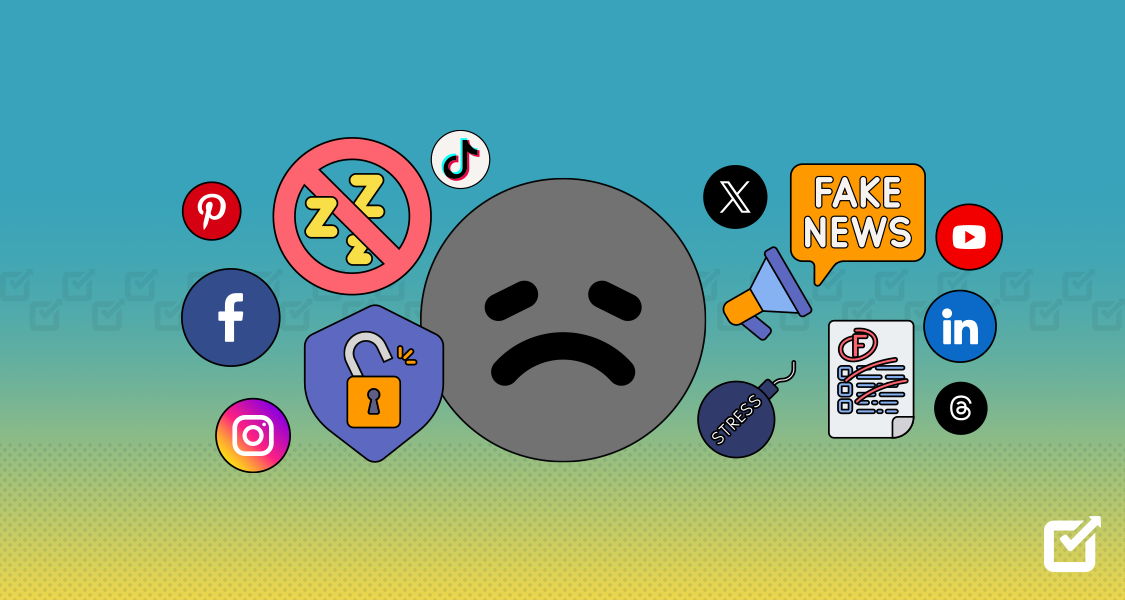
Impact on Privacy and Security Issues
In the digital age, privacy and personal information security are becoming a top concern on social media. Social media platforms regularly collect a large amount of personal data from users, from basic information such as name and address to behavioral data such as web browsing habits, shopping preferences and social relationships. In addition, sharing too much personal information on social media can also lead to risks such as identity theft, online fraud and online tracking. Many users unintentionally reveal sensitive information such as travel schedules, work or study locations, creating conditions for bad guys to take advantage.
Cyberbullying
Cyberbullying has become a serious problem, especially for young people and teenagers. Unlike traditional bullying, cyberbullying can occur 24/7 and follow the victim everywhere via mobile devices. Online bullying takes many forms, from posting malicious comments, spreading malicious rumors, to creating websites or groups with the purpose of attacking individuals. Serious incidents have led to heartbreaking consequences such as depression and suicide in teenagers. According to studies, about 59% of teenagers have been bullied or harassed online and this number has tended to increase in recent years.
Fake News
The spread of fake news on social media has become a serious problem, affecting many aspects of social life. Fake news can spread faster and more widely than real news due to the viral nature of social media. During the COVID-19 pandemic, fake news about unproven treatments or conspiracy theories about the origin of the virus have caused panic and seriously affected the epidemic prevention work. Disinformation campaigns can also impact important political processes such as elections, causing social division and reducing trust in institutions. According to a study by MIT, fake news is 70% more likely to spread faster than real news on Twitter.
Impact on Mental Health
Excessive use of social media is having a negative impact on users’ mental health. FOMO (Fear Of Missing Out) syndrome makes many people feel anxious and insecure when they do not regularly update information on social media. The tendency to compare their lives to the perfectly selected and edited images on social media can lead to feelings of low self-esteem, depression or anxiety. Research shows that teenagers who use social media more than 3 hours a day are 50% more likely to suffer from mental health problems than those who use it less. In addition, dependence on social media can also lead to internet addiction, sleep disorders and decreased ability to concentrate.
Benefits of Social Media for Businesses
Nowadays, social media has become a place where businesses can promote their brands, take care of customers, analyze the market, thereby optimizing operations and increasing profits.
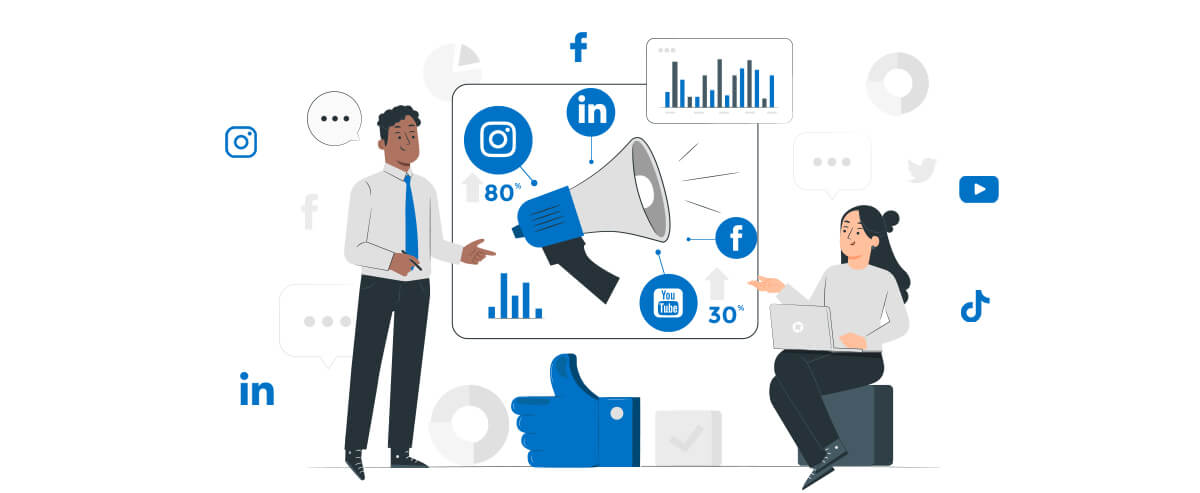
Enhance Brand Awareness
Social media helps businesses build and strengthen brand recognition in the digital age. Through a regular presence on social media platforms, businesses can build a trustworthy brand image in the minds of customers. Sharing valuable content, from brand stories to useful information about products and industries, helps businesses build a professional image.
Regular engagement on social media also helps businesses create buzz and maintain a constant presence in the minds of customers. By creating unique, creative content, businesses can expand their reach and attract the attention of potential customers. In particular, the ability to interact and share content on social media helps the brand message spread naturally through users’ social networks.
Effective Marketing
Social media provides effective and cost-effective marketing tools for businesses. These platforms allow for the implementation of precisely targeted advertising campaigns, based on criteria such as age, geographic location, interests, and user behavior. The marketing capabilities of social media help optimize marketing budgets and ensure advertising messages reach the right target audience.
The ability to measure and track the effectiveness of marketing campaigns on social networks is also a significant advantage. Businesses can track important indicators such as interaction rates, conversion rates, etc., thereby adjusting marketing strategies in a timely manner to achieve optimal efficiency. In addition, integrating e-commerce features on social networks also creates a direct sales channel, helping to shorten the customer shopping journey.
Improve Customer Relations
Social media has revolutionized the way businesses interact and build relationships with customers. These platforms create a two-way communication channel, allowing businesses to listen and respond quickly to customer comments, questions, or opinions. This direct, timely interaction helps build trust and strengthens the bond between the brand and the customer.
In addition, social networks are also an effective tool in providing customer care services. Resolving customer issues and questions openly and transparently on social networks not only demonstrates the professionalism of the business but also helps build a positive image in the eyes of the community. At the same time, positive feedback from customers on social networks also becomes trustworthy testimonials, contributing to attracting new customers and strengthening trust in the brand.
Increase Revenue
Social media has become a powerful tool in boosting business revenue in a variety of effective ways. Social media provides direct sales tools through integrated online store features, allowing customers to shop immediately when they see products they like. This helps shorten the purchasing process and significantly increase conversion rates.
Building a community of loyal customers on social media also helps increase revenue through repeat orders and referrals. When customers are satisfied with products and services, they often share their positive experiences on social media, creating valuable electronic word-of-mouth.
Market and Competitor Analysis
Social media provides a huge repository of data about the market and competitors, allowing businesses to conduct in-depth analysis to make informed business decisions. By monitoring discussions, trends and user feedback on social media, businesses can grasp changes in customer needs and preferences, thereby adjusting marketing strategies accordingly.
Monitoring your competitors’ social media activity also provides valuable insights into their marketing strategies, brand positioning, and how they engage with their customers. Businesses can learn from their competitors’ successes and failures to refine their own strategies. Social media analytics tools also help assess their market share and competitive position in the industry.
Media Crisis Management
The ability to respond quickly and communicate directly to the public gives businesses better control over crisis situations. They can monitor and respond promptly to negative comments or misinformation on social media, prevent the spread of unfavorable information and protect brand reputation.
Social media also provides a platform for businesses to demonstrate transparency and accountability in resolving issues that arise. Publicly acknowledging errors (if any) and sharing corrective measures on social media not only helps to ease customer frustrations but also demonstrates the professionalism and reliability of the business.
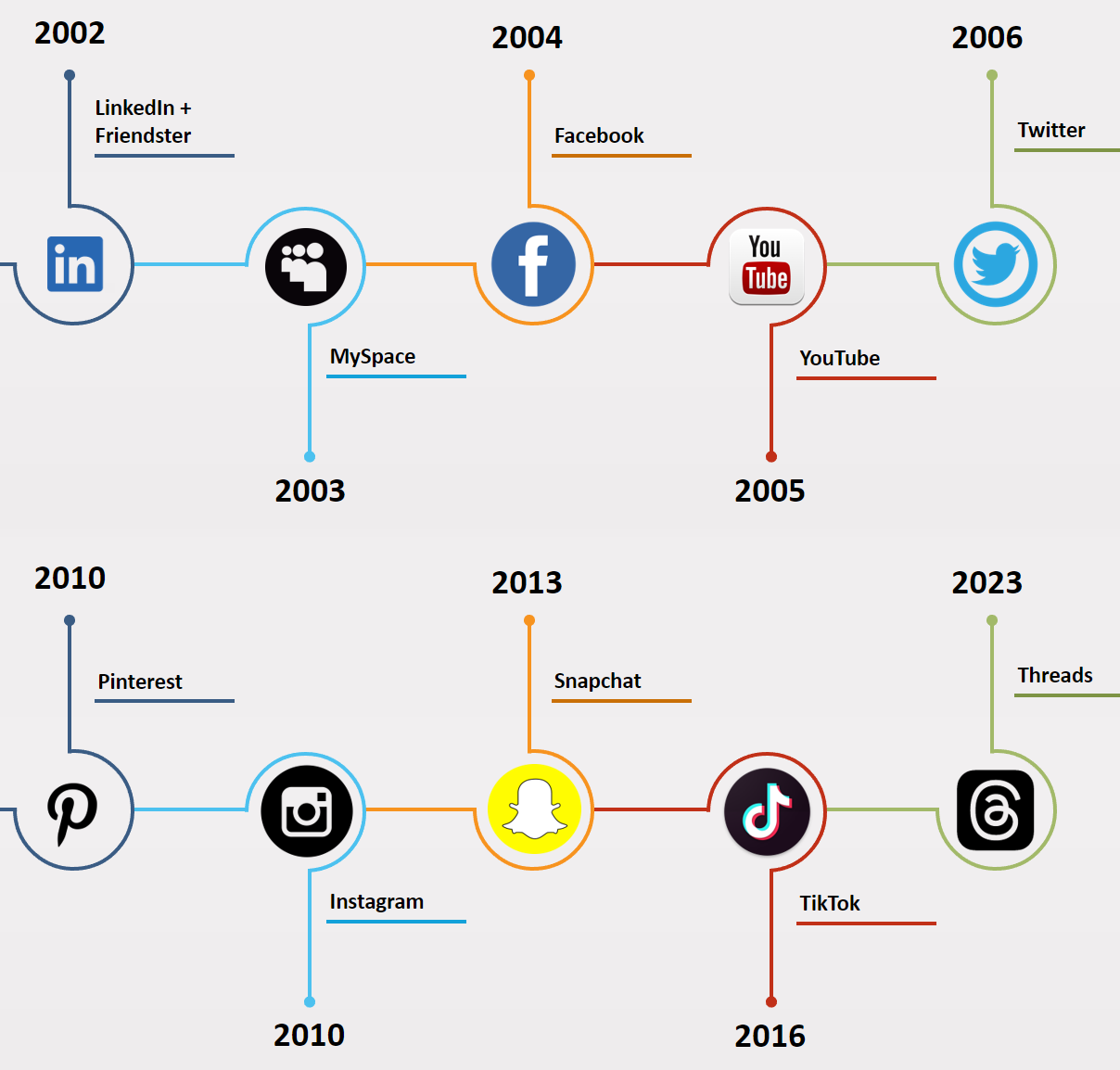
What Types of Social Media Marketing Are There?
What is the role of social media marketing? In today’s digital age, social media marketing has become an indispensable marketing tool for every business. This is a diverse field with many different forms, each form has its own advantages to approach and attract customers. Understanding and flexibly applying the types of social media marketing will help businesses build effective marketing strategies and optimize marketing budgets.
Content Marketing
Content marketing on social media is the art of creating and sharing valuable content that is relevant to the target audience. This is a form of marketing that requires an investment of time and effort to build trust and sustainable relationships with customers. Businesses often use many different content formats such as articles, images, videos, infographics to convey their messages. Content not only needs to be entertaining and engaging, but also educational, providing useful information and solving customer problems. Creating quality content requires careful market research, understanding customer psychology and needs, and constantly updating trends and adjusting content strategies accordingly.
Advertising
Social media advertising is a form of direct marketing that allows businesses to reach their target audience quickly and effectively. Social media platforms such as Facebook, Instagram, LinkedIn, and TikTok all provide advertising tools with the ability to target precisely based on many criteria such as age, gender, interests, and user behavior. Businesses can create diverse advertising campaigns with many different goals such as increasing brand awareness, attracting website traffic, increasing interactions, or boosting sales. Advertising implementation requires an understanding of how each platform works, the ability to analyze data, and continuously optimize campaign effectiveness.
Influencer Marketing
Influencer Marketing is a form of marketing that involves collaborating with influencers on social media. These people can be industry experts, celebrities, or people with large followings in specific fields. They help promote the products and services of businesses in a natural and trustworthy way through reviews, sharing experiences or creating creative content. Choosing the right influencer requires careful research on their style, values, and audience, ensuring that they are consistent with the brand and marketing goals of the business.
Social Network Management
Social media management is the job of managing and maintaining a brand’s presence on social media platforms. It is a professional, ongoing job that involves planning content, posting, engaging with followers, handling media crises, and tracking performance metrics. Social media managers need to be able to build and maintain online communities, create meaningful discussions, and maintain regular engagement with customers. They also need to be flexible in adjusting strategies based on user feedback and new trends on social media.
Paid Marketing Communications
Paid marketing is a form of investing in paid media channels to achieve specific marketing goals. This includes the use of advanced advertising tools, content sponsorship, or integrated marketing campaigns on many different platforms. This form requires a larger investment budget but brings quick and measurable results. Businesses need to have a reasonable budget allocation strategy, monitor and evaluate the ROI (Return on Investment) of each media channel to optimize investment efficiency. The combination of paid and organic media channels will create the best overall marketing effectiveness for the business.
How to Apply Social Media to Marketing?
Knowing how to apply social media to marketing will help businesses increase their business performance and achieve desirable results.
Identify Marketing Objectives
Before starting any social media marketing campaign, the first and most important thing is to clearly define your goals. Marketing goals need to meet the SMART model (Specific, Measurable, Achievable, Relevant, Time-bound). For example, instead of setting a vague goal like “increase followers”, you should define a specific goal like “increase Facebook followers to 10,000 within 3 months”.
Defining clear goals will help you stay on track and easily evaluate the effectiveness of your campaign. Your marketing goals need to align with your overall business goals, whether it’s increasing brand awareness, increasing sales, or improving customer service.
Platform Selection
Not all social media platforms are right for your business. The choice of platform depends on many factors such as your target audience, industry, and available resources. Facebook is often suitable for many types of businesses due to its diverse user base and rich marketing features. Instagram and Pinterest are great options for highly aesthetic industries such as fashion, cosmetics, or interior design. LinkedIn is suitable for B2B and professional businesses. TikTok is emerging as a potential platform to reach Gen Z with creative, entertaining content. Focusing on a few suitable platforms is more effective than trying to be present on all platforms.
Building a Content Strategy
Content is the key to attracting and retaining followers on social media. An effective content strategy should include a detailed posting schedule, diverse topics, and formats appropriate for each platform. The 80/20 rule is often applied: 80% of the content is valuable and entertaining, the remaining 20% is direct sales content. Content should be optimized for each platform, for example:
- Short videos for TikTok and Instagram Reels.
- High-quality images for Instagram Feed.
- Detailed posts for Facebook and LinkedIn.
It’s especially important to maintain consistency in your brand voice and visual style to build brand recognition.
Customer Interaction
Social media is not only a one-way communication channel but also a place to build communities and interact with customers. Responding to comments and messages quickly and professionally will help increase brand credibility. Organizing interactive activities such as contests, surveys, Q&A sessions not only increases public participation but also helps collect customer insights. Handling media crises in a transparent and professional manner is also an important skill in social media management. Listening to and responding to customers will help improve products/services and increase customer satisfaction.
Social Media Advertising
While organic content is important, paid social media advertising is an effective way to expand your reach and achieve your marketing goals quickly. Social media platforms offer detailed targeting options to reach the right audience. Facebook Ads allow you to target people based on their habits and behaviors. LinkedIn Ads are suitable for targeting based on jobs and expertise. Instagram Ads are effective in promoting products through images and videos. Optimizing your budget, A/B testing ad elements, and tracking key metrics will help improve your advertising campaign ROI.
Monitoring and Evaluation of Results
Measuring and analyzing results is an important step in evaluating the effectiveness of a social media marketing strategy. Metrics to track include: reach, engagement, conversion rate, ROI (return on investment). Analytics tools for each platform provide detailed data on the performance of content and advertising. In addition, using third-party tools such as Hootsuite, Buffer, Sprout Social helps manage and analyze data from multiple platforms effectively. Based on data analysis, adjust strategies flexibly to achieve optimal efficiency.
Distinguishing Social Media and Social Network
Many people often confuse social media and social networks because these two media have the same functions. So let’s distinguish them with MarkKnow right below:
| Element | Social media | Social network |
| Purpose | Social media focuses on creating and sharing content to a large audience, where users can disseminate information, ideas, and opinions in various forms such as text, images, videos, or audio. The main goal of social media is to create valuable content that attracts the attention of the community, often without requiring a two-way relationship between the content creator and the recipient. For example, YouTube platforms, where content creators can post videos without directly interacting with viewers. | Social networking is the practice of building and maintaining social relationships, creating connections between people with common interests, goals or backgrounds. The focus of social networking is on two-way interaction, where users engage in conversations, share personal information and build networks. Facebook is a typical example, where users make friends, interact through comments and messages. |
| Interactivity | In social media, interaction is often one-way or limited, with users primarily consuming content created by others. While there may be interactive features such as liking, sharing, or commenting, the level of engagement between content creators and consumers is often shallow. Social media content is often designed to attract attention and create a broad impact rather than build personal relationships. | Social networks emphasize interaction and engagement among network members. Users engage in deeper conversations, share personal experiences, and build meaningful relationships. Networking platforms often provide a variety of tools to enhance interaction, such as group chats, online events, and community groups. |
| Content and form | Social media is often focused on creating high-quality, professionally edited and produced content. Social media content is often informative, entertaining or promotional, designed to attract the attention of a large audience. Platforms like Instagram and TikTok are prime examples, where users invest time and effort to create visually and aurally appealing content. | Social networks share content that is more personal and natural. Users share everyday moments, personal thoughts, and updates about their lives. Content on networking platforms often requires less editing and is more authentic and natural. |
| Tools and features | Social media typically offers tools focused on content creation and distribution, such as photo/video editors, live streaming tools, and content performance analytics. These platforms often have sophisticated algorithms to recommend content that matches users’ interests and optimize reach. | Social networks provide tools for increased connection and interaction, such as direct messaging, group chat, event creation, and status-sharing features. These platforms often include tools for finding and connecting with people who share similar interests or hobbies. |
| Target audience | Social media aims to reach a large, unlimited audience, with the goal of creating impact on a large scale. Content on social media can spread quickly to millions of users globally. | Social networks share more selective and limited relationships, with an audience primarily made up of people in the user’s personal or professional network. The reach is often smaller but deeper and more meaningful in terms of personal relationships. |
Examples of Effective Social Media Application in Marketing
What is special about social marketing? It is the ability to spread widely and bring profits to many leading businesses. Join MarkKnow to review famous social marketing campaigns in Vietnam and internationally.
Spotify: Spotify Wrapped 2022
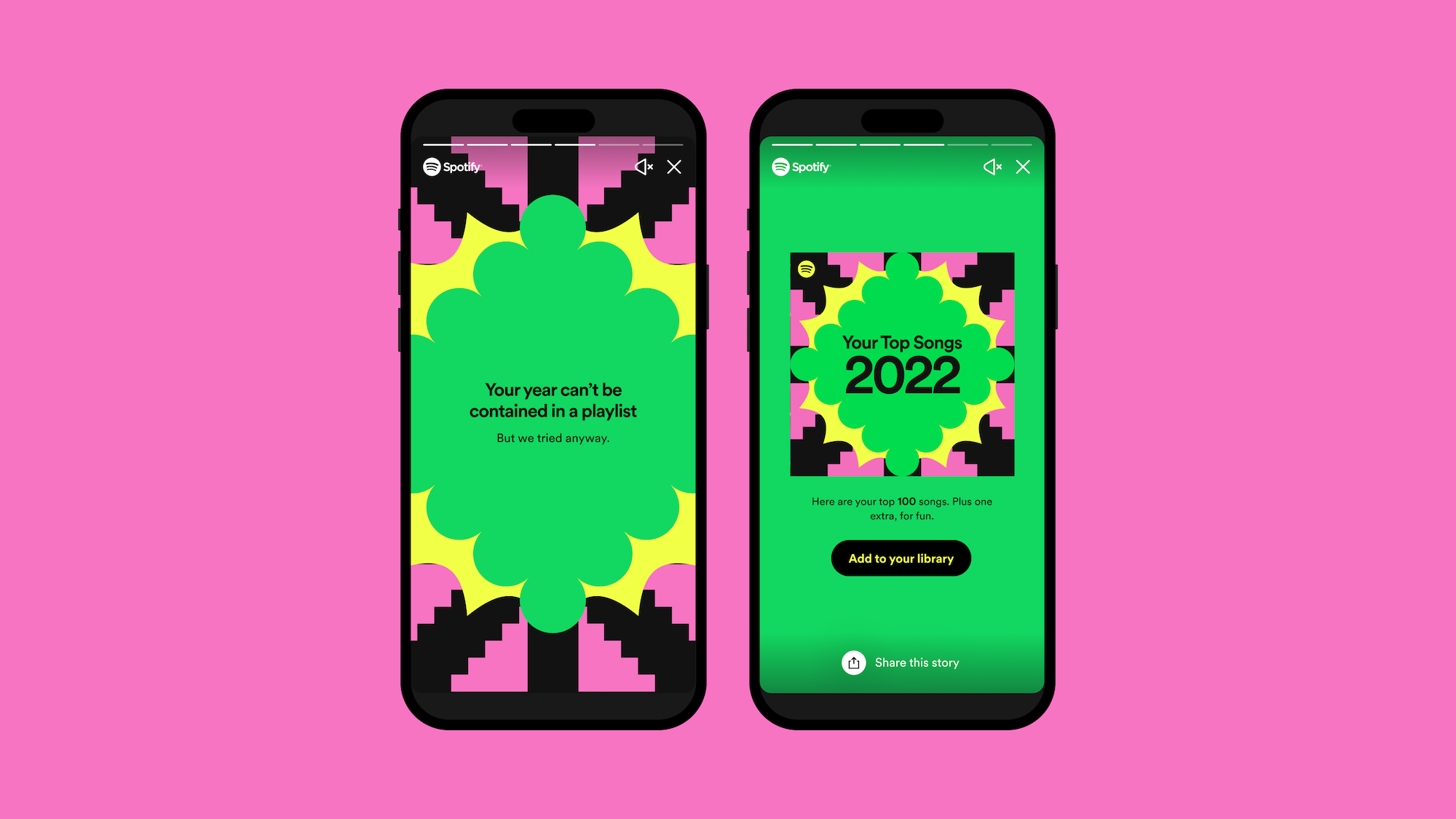
Spotify Wrapped is Spotify’s annual campaign that allows users to look back at their music journey over the past year. The 2022 campaign is enhanced with new features such as “Music Personality” and “Audio Day”, which provide interesting insights into users’ listening habits. The content is designed to be easily shared across social media platforms.
Campaign results:
- Over 156 million users joined in watching Wrapped 2022.
- 30% increase in shares compared to 2021.
- The hashtag #SpotifyWrapped has reached over 92 billion views on TikTok.
- Increased app downloads by 21% in the first week of launch.
- Q4/2022 revenue increased 18% year-on-year.
The campaign created a trend of sharing personal music culture on social media, fostering community connection through music. On the business side, Spotify solidified its leadership in the music streaming industry, increased brand awareness, and attracted new users. Many other businesses have also started to apply the same “wrapped” format to their campaigns.
Twitter: “If You Can Dream It, Tweet It”
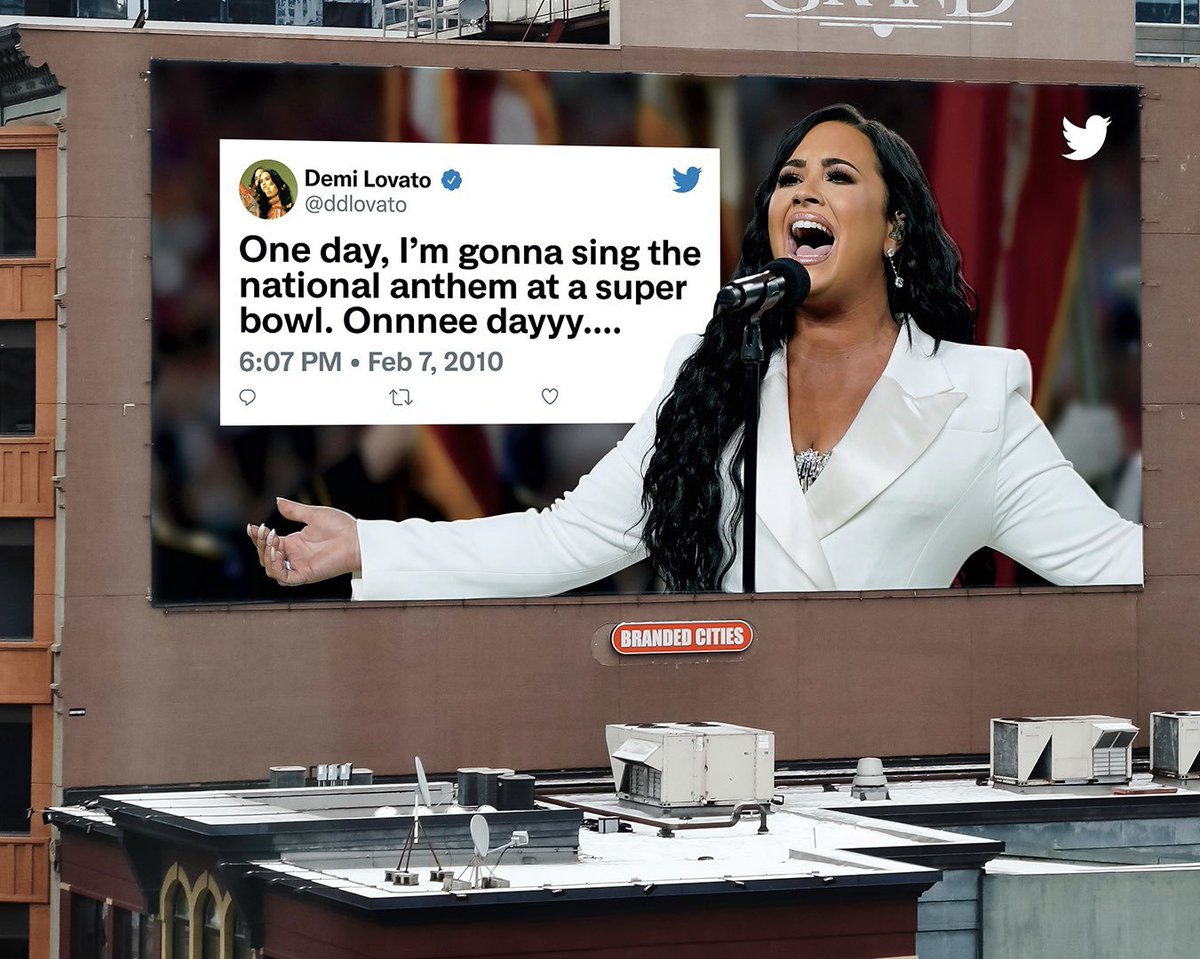
The campaign, which launched in 2022, encourages people to share their dreams and ambitions on Twitter. It features real tweets that have come true, from the success stories of artists and entrepreneurs to the everyday dreams of ordinary people.
- Over 8 million interactions with the official hashtag.
- The promotional video reached 12 million views in its first week.
- 24% increase in tweets sharing personal goals.
- 35% growth in interactions and comments on the platform.
“If You Can Dream It, Tweet It” created a positive environment on Twitter, encouraging users to share and pursue their dreams. In terms of branding, Twitter reinforced its image as a platform where great ideas are born and spread. The campaign also contributed to increased user engagement and time spent on the platform.
Dove: #ShowUs

#ShowUs is a collaboration between Dove, Getty Images and Girlgaze to break down stereotypes about beauty standards. The campaign features over 10,000 unedited images of real women representing a diverse range of ethnicities, ages, and body sizes.
Campaign results:
- Over 1.5 billion global reach.
- 70% increase in brand awareness.
- Stock photos used by over 2,000 companies.
- 45% increase in sales in launch quarter.
- Won many prestigious advertising awards.
The campaign had a huge impact in changing the way the media portrayed women. Many brands and agencies began to use more diverse, realistic images in their advertising. On the business side, Dove solidified its position as a pioneer in the Real Beauty movement, increasing customer trust and loyalty.
Apple: #ShotOniPhone
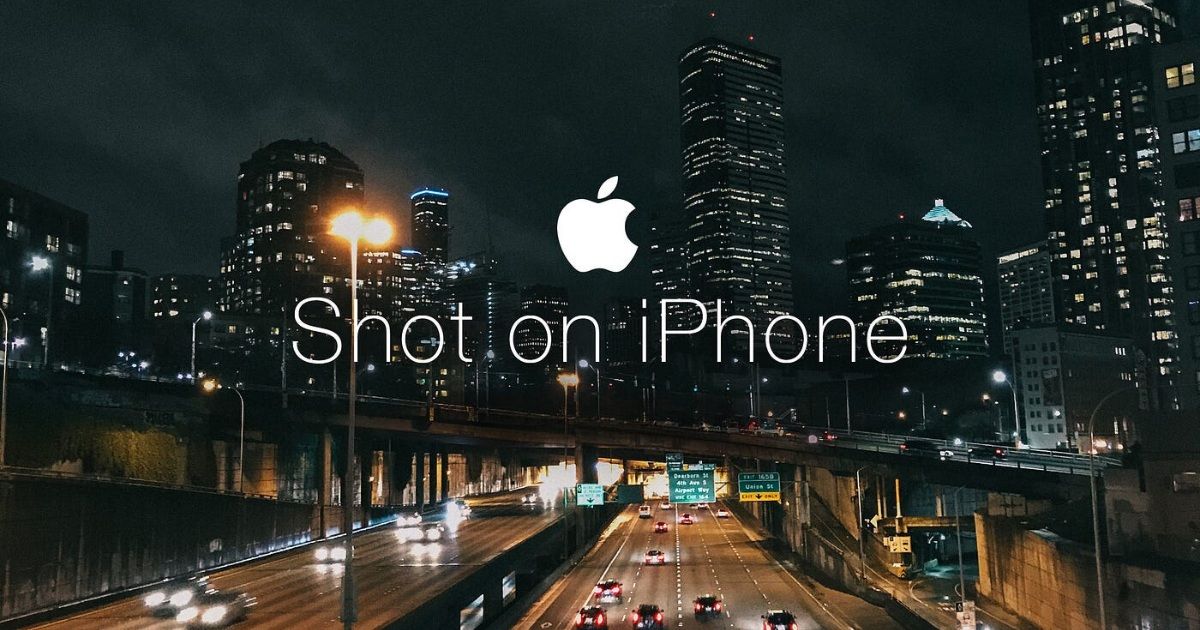
#ShotOniPhone is one of Apple’s most successful campaigns, which started in 2015 and is still going strong today. Apple encouraged iPhone users to share photos/videos taken with their phones using the hashtag #ShotOniPhone. Apple regularly holds contests and showcases the best photos on billboards, TV commercials, and official social media channels. The campaign not only promoted the iPhone’s photography capabilities but also created a vibrant mobile photography community.
Campaign results:
- Over 21 million posts with the hashtag #ShotOniPhone on Instagram.
- 3.8 million videos use the hashtag on TikTok.
- 52% increase in interactions and responses on Apple’s social media platforms.
- 67% of new iPhone users say photography was a deciding factor in their purchase.
- Marketing costs reduced by 30% thanks to community content.
- iPhone sales increase 15% in quarters with big campaigns.
The campaign democratized artistic photography, showing that anyone could create beautiful work with the tools at their fingertips. Culturally, #ShotOniPhone created a global mobile photography movement that fostered creativity and sharing within the community. For Apple, the campaign reinforced the iPhone’s leadership in the premium smartphone segment, especially in terms of photography. Many other brands have begun to adopt similar content strategies.
With billions of users worldwide, social networking platforms or websites like MarkKNow are not only places for communication and connection but also become powerful tools in the fields of business, marketing and communication. As a citizen in the digital age, understanding What social media is and how to utilize social media marketing will help you develop significantly and grasp modern business and communication trends.
Frequently Asked Questions
1. What is Social Media Manager?
A social media manager is responsible for building and managing brand image on social networking platforms through content planning, user interaction and campaign effectiveness analysis.
2. What is the Salary of a Social Media Staff?
Social media staff salaries range from $800/month for new employees and can be up to $2000/month for experienced managers.
3. Which Social Media Platforms Are Most Effective for Marketing?
Facebook, TikTok, Instagram are the most effective social media platforms for marketing in Vietnam, with the ability to reach a large number of users and a variety of advertising tools.
Comment Policy: We truly value your comments and appreciate the time you take to share your thoughts and feedback with us.
Note: Comments that are identified as spam or purely promotional will be removed.
To enhance your commenting experience, consider creating a Gravatar account. By adding an avatar and using the same e-mail here, your comments will feature a unique and recognizable avatar, making it easier for other members to identify you.
Please use a valid e-mail address so you can receive notifications when your comments receive replies.
